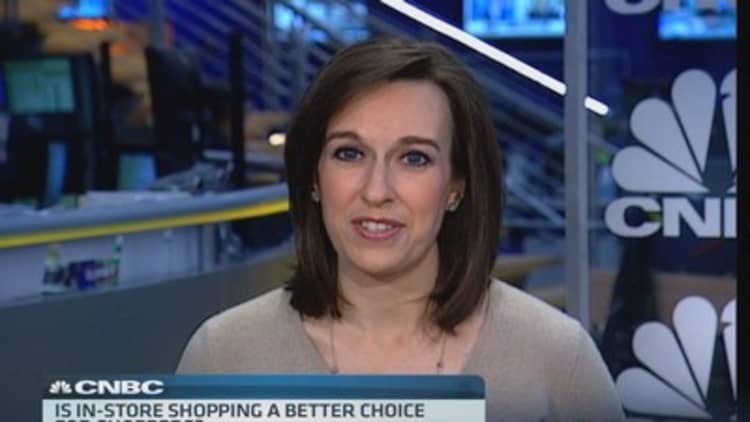
While retailers are focusing on their online offerings, they shouldn't ignore their traditional brick-and-mortar stores, according to a recent survey.
Although e-commerce continues to take share from physical stores, shoppers still value in the in-store experience. In fact, according to a data from the Accenture survey, 21 percent of U.S. shoppers plan to increase in-store purchasing, more than double the 9 percent of adults who said the same last year.
In fact, when asked what part of the overall shopping experience retailers need to improve, 40 percent say the in-store shopping experience, with just 16 percent pointing to the online shopping experience.
"Consumers have become used to the things they can do online, and expect to be able to do them in-store" said Renato Scaff, managing director of Accenture's retail practice. Scaff said features like in-stock availability and customer reviews are just two types of information offered online that aren't necessarily readily available at the in-store level.
This past holiday season, Best Buy marketed itself as the "showrooming" retailer, effectively inviting customers to come in, check out the goods and then order them online. The hope, of course, was that shoppers would either change their minds and buy in-store on the spot or order from the retailer's own website. While some thought it was bold and forward-thinking for the consumer electronics retailer to embrace the phenomenon, perhaps it was already behind the curve.
(Read more: The names that are shaping retail's revolution )
Accenture said "showrooming" is losing its hold on shoppers, it's actually "webrooming" that's all the rage. Accenture defines "webrooming" as browsing online and then going to a physical location to make a purchase, and "showrooming" as going into a physical store to see a product and then going online for a better price and ordering it from the Web.
The study said 78 percent of U.S. shoppers have "webroomed" over the past 12 months, while 72 percent have "showroomed."
(Read more: Creepy or helpful? Shoppers less wary of retail spying)
When further divided by category, webrooming for consumer electronics and home improvement purchases saw large jumps over last year, up from 39 percent to 48 percent, and 25 percent to 35 percent, respectively.
Accenture's data line up with ShopperTrak's explanation of the disconnect between in-store holiday season sales and traffic. ShopperTrak said foot traffic at the nation's retailers fell 14.6 percent in past November and December compared to the prior year, but in-store sales rose 2.7 percent.
ShopperTrak founder Bill Martin said traffic is down because shoppers are visiting fewer stores per shopping trip, but sales are up because shoppers are heading to stores with the intent to buy. Rather than spending time moving from store to store to window shop in a traditional way, browsing is done online ahead of time, but some of the purchasing is done in-store. That's webrooming.
—By CNBC's Courtney Reagan. Follow her on Twitter @CourtReagan.


